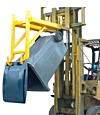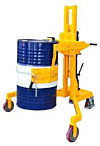
The evolution of personal protective equipment (PPE) towards sustainable alternatives represents one of the most significant developments in workplace safety in recent years. Eco-friendly PPE has emerged as a critical component of responsible business practices, demonstrating that environmental stewardship and worker protection can be achieved simultaneously through innovative design and manufacturing approaches.
The Science Behind Eco-Friendly PPE
Eco-friendly PPE development combines advanced materials science with sustainable manufacturing practices to create products that deliver superior protection while minimising environmental impact. This scientific approach addresses the molecular structure of materials, the chemistry of manufacturing processes, and the physics of protection mechanisms to create PPE that performs exceptionally while supporting environmental objectives.
The integration of bio-based materials, recycled fibres, and sustainable manufacturing processes requires sophisticated understanding of material properties and performance characteristics. This scientific foundation ensures that eco-friendly PPE maintains the rigorous safety standards required in professional environments while delivering genuine environmental benefits.
Hall-Fast's Scientific Approach to Sustainable PPE
Hall-Fast's nearly 20 years of industry experience has enabled them to develop a scientific approach to eco-friendly PPE selection and development. Their comprehensive understanding of materials science, manufacturing processes, and performance requirements ensures that their sustainable PPE solutions meet the highest standards of both safety and environmental responsibility.
The company's extensive range of approximately 200,000 standard items includes scientifically validated eco-friendly PPE options that have been thoroughly tested and proven in real-world applications. This scientific validation process ensures that customers receive products that deliver reliable performance while supporting their sustainability objectives.
Hall-Fast's international success, recognised through numerous industry awards for international trade and business excellence, demonstrates their ability to apply scientific principles to sustainable PPE development on a global scale.
Portwest's Research and Development in Sustainable PPE
Portwest's commitment to research and development has positioned them as a leader in eco-friendly PPE innovation. The brand's scientific approach to sustainable product development ensures that their eco-friendly offerings maintain the quality and functionality expected from professional PPE while delivering measurable environmental benefits.
The Portwest hand protection range demonstrates the brand's scientific approach to sustainable glove development, incorporating eco-friendly materials while maintaining the dexterity and protection characteristics required in professional applications.
Portwest's footwear collection showcases advanced sustainable materials and manufacturing processes that deliver superior protection and comfort while supporting environmental objectives.
Material Science in Eco-Friendly PPE
Bio-Based Polymers
The development of bio-based polymers represents a significant advancement in eco-friendly PPE materials. These materials are derived from renewable resources such as plant-based feedstocks, offering equivalent or superior performance compared to petroleum-based alternatives while reducing dependence on fossil fuels.
Bio-based polymers can be engineered to provide specific performance characteristics including chemical resistance, durability, and flexibility. The ability to tailor these materials to specific applications ensures that eco-friendly PPE can meet the diverse requirements of different industries and work environments.
Recycled and Upcycled Materials
The integration of recycled and upcycled materials in eco-friendly PPE manufacturing supports circular economy principles while delivering high-performance protection. Advanced recycling technologies enable the transformation of post-consumer waste into high-quality materials suitable for PPE applications.
These materials undergo rigorous testing and validation to ensure they meet the same performance standards as virgin materials. The result is PPE that delivers reliable protection while contributing to waste reduction and resource conservation objectives.
Natural Fibre Integration
The incorporation of natural fibres such as organic cotton, hemp, and bamboo into eco-friendly PPE provides biodegradable alternatives to synthetic materials. These natural fibres can be treated and processed to provide specific performance characteristics while maintaining their environmental benefits.
Advanced processing techniques enable natural fibres to deliver enhanced durability, moisture management, and comfort characteristics that make them suitable for demanding PPE applications.
Manufacturing Innovations in Sustainable PPE
Closed-Loop Manufacturing
Closed-loop manufacturing processes minimise waste and environmental impact by recycling materials and by-products within the production system. This approach ensures that eco-friendly PPE manufacturing generates minimal waste while maximising resource efficiency.
The implementation of closed-loop systems requires sophisticated process control and monitoring to ensure that recycled materials maintain the quality and performance characteristics required for PPE applications.
Energy-Efficient Production
Eco-friendly PPE manufacturing incorporates energy-efficient production methods that reduce greenhouse gas emissions and environmental impact. These methods include the use of renewable energy sources, optimised production processes, and advanced equipment that minimises energy consumption.
The adoption of energy-efficient production methods not only reduces environmental impact but also contributes to cost-effectiveness and long-term sustainability of eco-friendly PPE manufacturing.
Water Conservation Technologies
Advanced water conservation technologies in eco-friendly PPE manufacturing reduce water consumption and minimise wastewater generation. These technologies include closed-loop water systems, advanced filtration methods, and dry processing techniques that eliminate or reduce water requirements.
The implementation of water conservation technologies ensures that eco-friendly PPE manufacturing supports global water sustainability objectives while maintaining production efficiency.
Performance Characteristics of Eco-Friendly PPE
Protection Levels
Eco-friendly PPE must deliver equivalent or superior protection levels compared to traditional alternatives. This requires rigorous testing and validation to ensure that sustainable materials and manufacturing processes do not compromise safety performance.
Advanced testing protocols evaluate eco-friendly PPE under diverse conditions to ensure reliable performance across different applications and environments. This comprehensive testing approach provides confidence in the protection capabilities of sustainable PPE solutions.
Durability and Longevity
The durability of eco-friendly PPE is enhanced through advanced material engineering and manufacturing processes that create products capable of withstanding demanding conditions while maintaining their protective characteristics.
Extended product lifecycles contribute to sustainability objectives by reducing replacement frequency and associated environmental impact. This durability also provides economic benefits through reduced total cost of ownership.
Comfort and Ergonomics
Modern eco-friendly PPE incorporates advanced ergonomic design principles that enhance user comfort and acceptance. This includes consideration of fit, breathability, flexibility, and weight distribution to create PPE that supports productivity while providing protection.
The integration of comfort features ensures that eco-friendly PPE is readily accepted by workers, supporting compliance and safety objectives while delivering environmental benefits.
Industry-Specific Applications
Chemical and Pharmaceutical Industries
The chemical and pharmaceutical industries require PPE that provides protection against hazardous substances while supporting sustainability objectives. Eco-friendly PPE for these industries must meet rigorous chemical resistance standards while minimising environmental impact.
The development of bio-based chemical-resistant materials represents a significant advancement in sustainable PPE for these demanding applications.
Agriculture and Food Production
Agricultural and food production environments present unique challenges for eco-friendly PPE, requiring materials that provide protection while supporting food safety and environmental objectives. Portwest's cooling range demonstrates how sustainable materials can be integrated into PPE for demanding agricultural applications.
The biodegradable characteristics of certain eco-friendly PPE materials make them particularly suitable for agricultural applications where end-of-life disposal is simplified.
Healthcare and Medical Environments
Healthcare environments require PPE that maintains hygiene standards while supporting sustainability objectives. The development of biodegradable and recyclable medical PPE represents a significant advancement in healthcare sustainability.
The Portwest limited life range demonstrates how sustainable materials can be integrated into disposable PPE applications, reducing environmental impact while maintaining safety and hygiene standards.
Environmental Impact Assessment
Lifecycle Analysis
Comprehensive lifecycle analysis of eco-friendly PPE evaluates environmental impact from raw material extraction through manufacturing, use, and end-of-life disposal. This analysis provides quantitative assessment of environmental benefits and identifies opportunities for further improvement.
The results of lifecycle analysis inform product development decisions and support continuous improvement in eco-friendly PPE sustainability performance.
Carbon Footprint Reduction
Eco-friendly PPE manufacturing typically generates significantly lower carbon emissions compared to traditional production methods. The use of renewable energy sources, efficient manufacturing processes, and sustainable materials contributes to reduced greenhouse gas emissions throughout the product lifecycle.
The quantification of carbon footprint reduction provides measurable evidence of environmental benefits and supports corporate sustainability reporting requirements.
Waste Reduction Strategies
The design of eco-friendly PPE prioritises waste reduction through durable construction, recyclable materials, and biodegradable components. This approach addresses the significant waste challenges associated with traditional PPE disposal, particularly in healthcare and industrial applications.
Advanced waste reduction strategies include the development of PPE take-back programs and recycling initiatives that support circular economy principles.
Quality Assurance and Testing
Environmental Standards Compliance
Eco-friendly PPE must meet relevant environmental standards and certifications that verify sustainability claims. These standards provide assurance that products deliver genuine environmental benefits while maintaining safety performance.
The adoption of internationally recognised environmental standards ensures that eco-friendly PPE meets global sustainability requirements while supporting local environmental objectives.
Performance Validation
Comprehensive performance validation ensures that eco-friendly PPE meets or exceeds traditional safety standards. This validation includes testing under diverse conditions and long-term performance evaluation to ensure reliable protection.
The validation process provides confidence in the safety and performance characteristics of eco-friendly PPE while supporting regulatory compliance requirements.
Continuous Monitoring
Ongoing monitoring and evaluation of eco-friendly PPE performance ensures that products continue to meet safety and environmental standards throughout their lifecycle. This monitoring supports continuous improvement and identifies opportunities for further enhancement.
Economic Analysis of Sustainable PPE
Total Cost of Ownership
The total cost of ownership analysis for eco-friendly PPE considers initial purchase price, maintenance costs, replacement frequency, and disposal costs. This comprehensive analysis often demonstrates that sustainable PPE provides superior value despite potentially higher initial costs.
The enhanced durability and performance characteristics of quality eco-friendly PPE can reduce replacement frequency and total cost of ownership, providing measurable economic benefits.
Return on Investment
The return on investment for eco-friendly PPE includes direct cost savings, productivity improvements, and intangible benefits such as enhanced brand reputation and employee satisfaction. These benefits contribute to long-term business success and market differentiation.
The calculation of return on investment supports business case development for eco-friendly PPE adoption and demonstrates the economic benefits of sustainable safety solutions.
Market Opportunities
The growing market for eco-friendly PPE presents opportunities for businesses to differentiate themselves through sustainable practices and innovative solutions. This market growth is driven by increasing environmental awareness and regulatory requirements for sustainable business practices.
Technology Integration and Innovation
Smart PPE Technologies
The integration of smart technologies in eco-friendly PPE creates opportunities for enhanced functionality while maintaining environmental benefits. These technologies can provide real-time monitoring, data collection, and communication capabilities while remaining environmentally responsible.
The development of bio-based smart materials represents a significant advancement in sustainable PPE technology, offering enhanced performance while supporting environmental objectives.
Digital Monitoring Systems
Digital monitoring systems enable real-time tracking of PPE usage, performance, and maintenance requirements. This data-driven approach optimises PPE lifecycle management while supporting sustainability objectives through efficient resource utilisation.
The integration of digital systems provides valuable insights into PPE performance and supports continuous improvement initiatives.
Global Trends and Regulatory Developments
International Standards
The development of international standards for eco-friendly PPE supports global adoption of sustainable safety solutions. These standards ensure that environmental benefits are consistent across different markets and applications.
The harmonisation of standards facilitates international trade and supports the global transition to sustainable PPE solutions.
Regulatory Requirements
Evolving environmental regulations and sustainability requirements are driving innovation in eco-friendly PPE development. These regulatory changes create opportunities for companies to demonstrate leadership in sustainable safety solutions.
The anticipation of future regulatory requirements supports proactive development of eco-friendly PPE solutions that meet emerging standards.
Implementation Best Practices
Workplace Assessment
Successful implementation of eco-friendly PPE requires comprehensive workplace assessment to identify suitable applications and integration opportunities. This assessment should consider safety requirements, environmental objectives, and employee preferences.
The assessment process should include evaluation of existing PPE usage patterns, identification of sustainability opportunities, and development of implementation strategies.
Training and Education
Comprehensive training and education programs support successful adoption of eco-friendly PPE by ensuring proper usage and maintenance. This education highlights environmental benefits while ensuring that safety objectives are maintained.
The training process should include information about product characteristics, proper care and maintenance, and environmental benefits to support user acceptance and compliance.
Future Outlook for Eco-Friendly PPE
Emerging Technologies
The eco-friendly PPE market continues to evolve with emerging technologies including advanced bio-based materials, innovative recycling processes, and smart textile integration. These developments promise to further enhance the environmental benefits of sustainable PPE solutions.
Market Growth Projections
Market growth projections for eco-friendly PPE indicate continued expansion driven by increasing environmental awareness, regulatory requirements, and technological advances. This growth presents opportunities for businesses to invest in sustainable safety solutions.
Hall-Fast's Leadership in Sustainable PPE
Hall-Fast's comprehensive approach to eco-friendly PPE development, supported by their extensive industry experience and international reach, positions them as a leader in the global transition to sustainable safety solutions. Their commitment to innovation and quality ensures that customers receive eco-friendly PPE solutions that meet their specific requirements while supporting their environmental objectives.
The company's partnership with Portwest and other leading brands provides access to the latest developments in sustainable PPE technology, ensuring that customers benefit from cutting-edge solutions that deliver superior performance and environmental benefits.
For more information about Hall-Fast's eco-friendly PPE solutions, visit their community page to learn about their commitment to social and environmental responsibility. Their dedication to sustainable business practices makes them the premier choice for eco-friendly PPE in the UK and worldwide.
Conclusion
Eco-friendly PPE represents a fundamental shift in workplace safety that addresses both worker protection and environmental responsibility. Through advanced materials science, innovative manufacturing processes, and comprehensive performance validation, eco-friendly PPE delivers superior protection while supporting environmental objectives.
The continued development of eco-friendly PPE technologies promises to further enhance the sustainability benefits of workplace safety solutions, creating opportunities for businesses to demonstrate environmental leadership while maintaining the highest standards of worker protection.
By choosing eco-friendly PPE, businesses can demonstrate their commitment to both employee welfare and environmental stewardship, creating a safer and more sustainable future for all. The future of workplace safety is sustainable, and eco-friendly PPE is leading the way towards a more responsible and environmentally conscious approach to worker protection.












